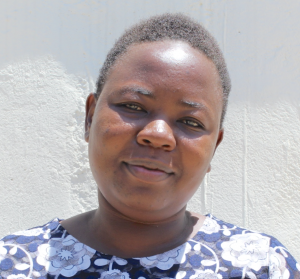A normal day in Emachembe Community begins early in the morning so that students can get to school on time.
Members of this community engage in small-scale farming. They plant maize, beans, vegetables, and sugarcane. Some people make bricks and extract stones or gravel used for construction to earn a living.
Men and women do various chores and then proceed with the day's activities. For women, they begin by going to the river to fetch water. Fetching water is an activity dominated by the women. They get their jerrycans to go line up in the spring. They get to their homes to continue with the house chores such as cleaning the house and the compound.
Water
Gathering of water from this spring is a problem for the community. The community, through the village elder, made a call to one of our staff members after seeing what was done at Saul Shivogo Spring and asked for us to consider their spring for protection.
A person needs to go very early in the morning or late in the evening to collect water from the spring due to the long lines.
Members wade into the water and draw from it using small containers to then fill the bigger jerrycans. The gathered water is stored in different containers, depending on the household. The most popular containers used are 20-liter jerrycans and 100-liter plastic tanks. Households also have pots made of clay soil to store drinking water. This is believed to act as a natural refrigerator that keeps water cold.
"Most people in this community have suffered from waterborne diseases, looking at the living standards we are not even able to meet the required money for treatment. Instead, people use alcohol to treat typhoid which is risky to their life," Mrs. Rose Mastiza said.
The current water source is contaminated because the spring is open and the way the water is drawn gives a clear indicator of contamination since one has to step inside water in order to draw water.
"I will personally champion for the protection of Mukabane Spring by mobilizing the communities to provide the required local materials." Pauline, a young girl from the community, said.
"I am disabled due to polio and my people can also lose their lives due to outbreaks resulting from drinking dirty and contaminated water."
As we look at the bright face of this girl we are moved. To see this project succeed will show that despite her disability, she is able to make a difference.
Implementing this project will be of great impact in this community and particularly in the life of Pauline.
Sanitation
Fewer than half of households have latrines. Most of the existing pit latrines are in a poor condition, for they are made with mud floors.
They are difficult to be cleaned because urine is splashed on top predisposing users to diseases. The walls are made of mud while others are made of racks and rusty iron sheets.
Individuals who do not have sanitation facilities such as dish rack, bathroom, or toilets indicated a willingness to get them. Most of the people dispose of their garbage in the banana plantation to compost and then use it later as manure. As a positive sign, community members showed an interest in general cleanliness whereby they bathe, wash their clothes, and clean their houses.
This shows how this community has a positive attitude towards hygiene and sanitation.
Here’s what we’re going to do about it:
Training
Community members will attend hygiene and sanitation training for at least two days. This training will ensure participants have the knowledge they need about healthy practices and their importance. The facilitator plans to use PHAST (Participatory Hygiene and Sanitation Transformation), CLTS (Community-Led Total Sanitation), ABCD (Asset-Based Community Development), group discussions, handouts, and demonstrations at the spring. One of the most important topics we plan to cover is the handling, storage, and treatment of water. Having a clean water source will be extremely helpful, but it is useless if water gets contaminated by the time it’s consumed. Handwashing will also be a big topic.
Training will also result in the formation of a committee that will oversee operations and maintenance at the spring. They will enforce proper behavior around the spring and delegate tasks that will help preserve the site, such as building a fence and digging proper drainage. The fence will keep out destructive animals, and the drainage will keep the area’s mosquito population at a minimum.
Sanitation Platforms
On the final day of training, participants will select five families that should benefit from new latrine floors.
Training will also inform the community and selected families on what they need to contribute to make this project a success. They must mobilize locally available materials, such as bricks, clean sand, hardcore, and ballast. The five families chosen for sanitation platforms must prepare by sinking a pit for the sanitation platforms to be placed over. All community members must work together to make sure that accommodations and food are always provided for the work teams.
Spring Protection
Protecting the spring will ensure that the water is safe, adequate and secure. Construction will keep surface runoff and other contaminants out of the water. With the community’s high involvement in the process, there should be a good sense of responsibility and ownership for the new clean water source.
Fetching water is predominantly a female role, done by both women and young girls. Protecting the spring and offering training and support will, therefore, help empower the female members of the community by giving them more time and efforts to engage and invest in income-generating activities.

 Protected Spring
Protected Spring
 Rehabilitation Project
Rehabilitation Project









































